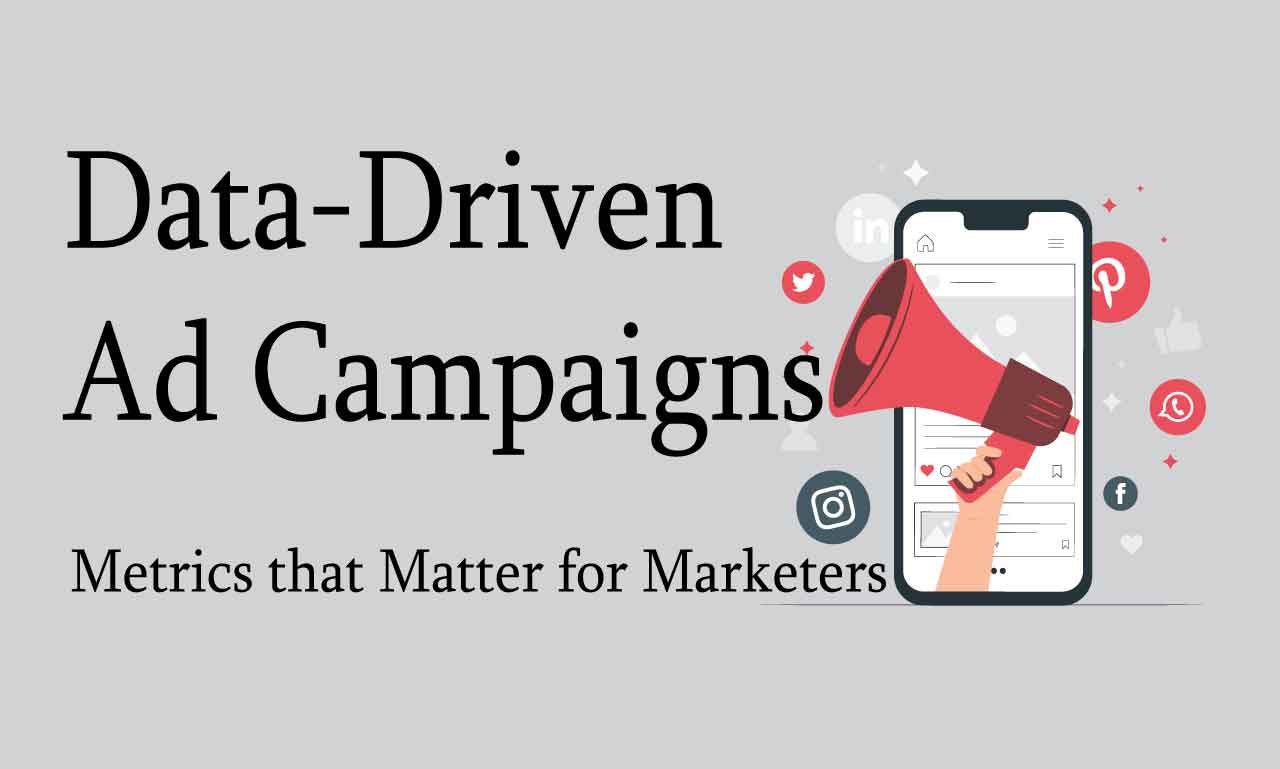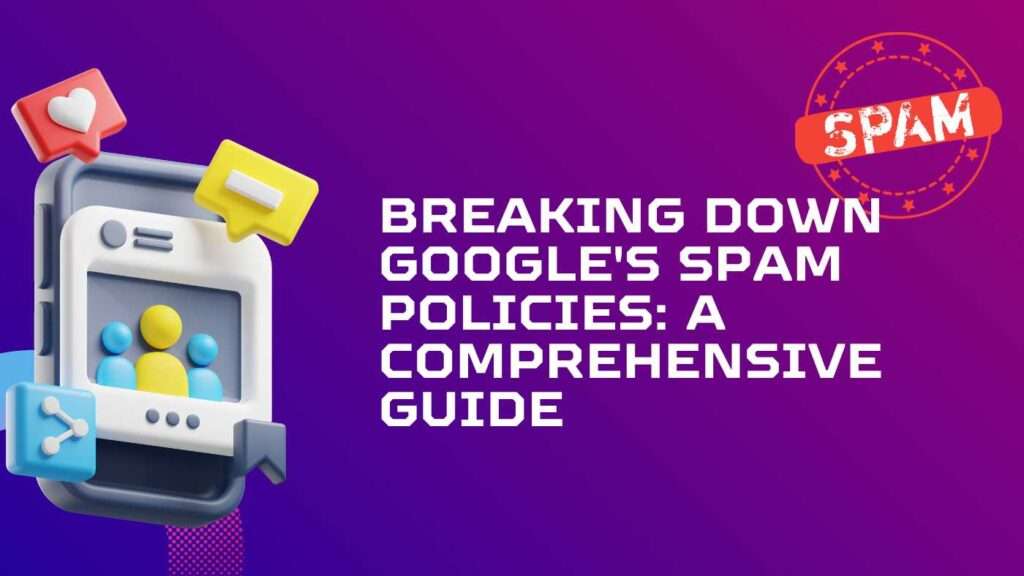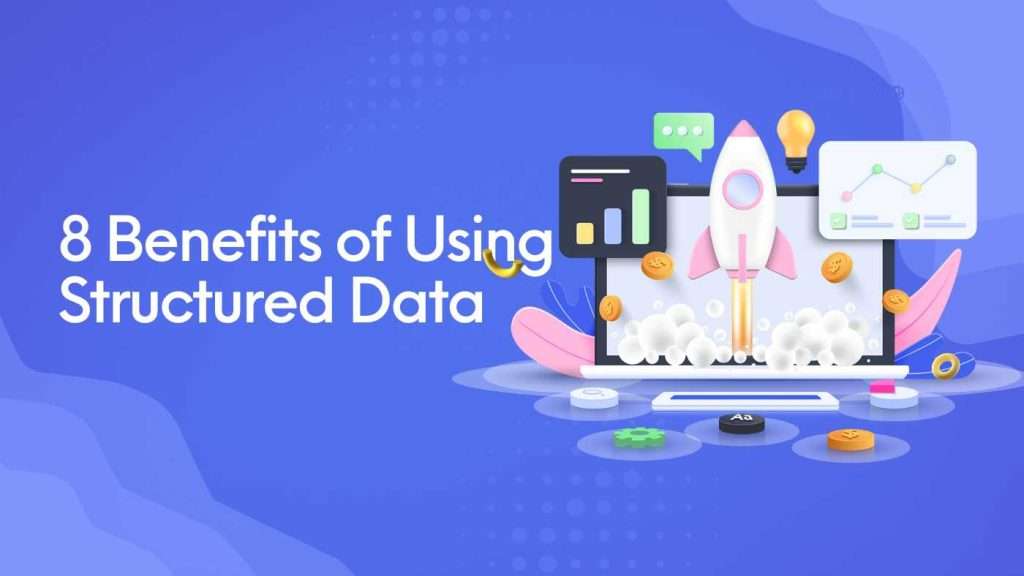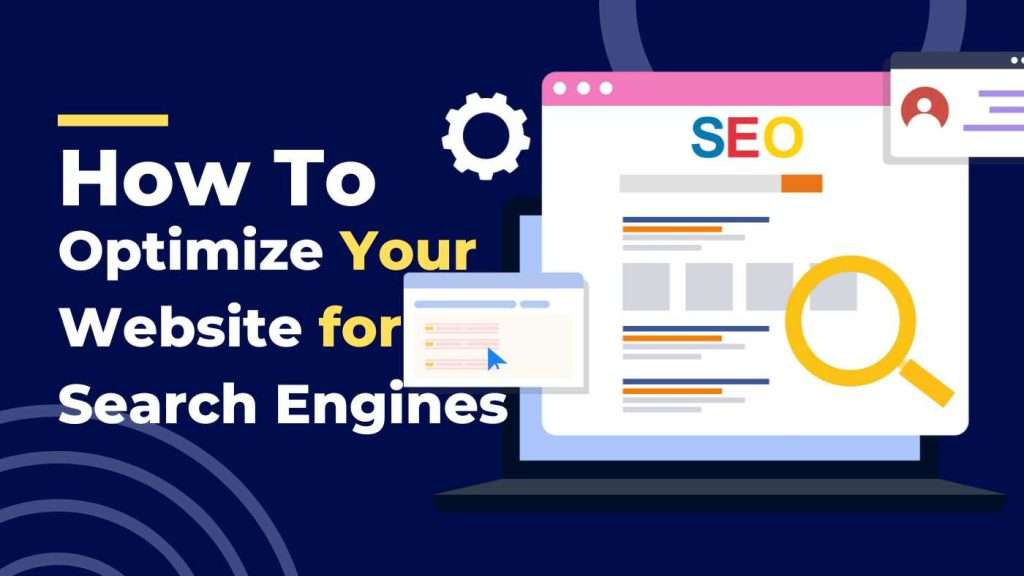Introduction
Effective advertising is not just about creating eye-catching campaigns; it’s about using data-driven insights to make informed decisions. Marketers are increasingly relying on data to fine-tune their ad campaigns, ensuring they reach the right audience and generate meaningful results.
In this article, we’ll explore the key metrics that matter for marketers when it comes to data-driven ad campaigns.
Understanding the Shift to Data-Driven Advertising
Advertisers would make decisions about their advertising campaigns based on their instincts and guesses. They didn’t have access to a lot of data to understand how effective their ads were. They would rely on their feelings and intuition to figure out if their advertising was working or not.
But things have changed. Nowadays, advertisers have access to a huge amount of data thanks to technology and the internet. This data includes information about how people interact with ads, what they like, and how they respond to different marketing tactics. Data-driven advertising means that advertisers use this data to make their decisions.
By using data, advertisers can now make more informed and precise choices about where and how to spend their advertising budgets. They can analyze the data to see what works and what doesn’t, allowing them to use their money more efficiently. In other words, data-driven advertising helps advertisers ensure that they are getting the best results from their advertising efforts, instead of relying on guesswork.
The Importance of Setting Clear Objectives
- Setting Clear Objectives: Before you begin running ads, you need to decide exactly what you want to achieve with your advertising efforts. This could be things like increasing awareness of your brand, getting more people to visit your website, or generating more sales.
- Measuring Success: Once you have these clear objectives in place, you’ll be able to measure whether your ad campaign is successful or not. If you don’t have specific goals, it’s like trying to hit a target blindfolded. You won’t know if you’re on track or if you’ve missed the mark.
- Accuracy in Measurement: Clear objectives provide a benchmark for measuring success accurately. For example, if your goal is to boost sales by 20%, you can easily measure whether you’ve achieved this or not. But if you don’t have such a specific goal, you won’t know what success looks like, and you might misinterpret the results.
- Guidance for Strategy: Clear objectives also guide your advertising strategy. Depending on your goals, you might choose different advertising platforms, messaging, or targeting strategies. For instance, if your objective is to increase brand awareness, you might focus on reaching a wide audience, whereas, for sales, you might target a specific demographic.
Tracking Impressions and Click-Through Rates (CTR)
- Impressions: This tells you how many times your ad has been seen by people. Imagine it like the number of times your ad appears on a website or social media.
- Click-Through Rate (CTR): This is a percentage that shows how many people clicked on your ad after seeing it. If 100 people saw your ad and 10 of them clicked on it, your CTR would be 10%.
Now, let’s break down why these two metrics are important:
- High Impressions: If your ad gets a lot of impressions, it means many people are seeing it. This is good for getting your brand in front of a lot of eyes. It’s like putting up a billboard on a busy street where thousands of people pass by.
- Low CTR: However, if even though many people see your ad, very few actually click on it, it could mean that your ad isn’t connecting with your target audience. In other words, people are looking at your billboard but not stopping to read what’s on it or take action. A low CTR suggests that your message or offer might not be appealing or relevant to the people who are seeing it.
Conversion Rate: Turning Clicks into Customers
“Conversion Rate” is used in online advertising and marketing to measure how successful an advertisement is at getting people to do what you want them to do after they click on the ad. This desired action could be various things, like buying a product, signing up for a newsletter, or filling out a contact form on a website.
In simple terms, the conversion rate is like a score that tells you how good your ad is at turning clicks (when people click on your ad) into actual customers or achieving other specific goals you’ve set. It’s an essential metric because it directly shows how effective your ad is in getting people to take the actions you want them to take.
For example, if your ad has a high conversion rate, it means that a significant percentage of people who click on your ad are doing what you want them to do, like making a purchase. On the other hand, if your ad has a low conversion rate, it means that not many people who click on your ad are taking the desired action, which could indicate that your ad or the landing page it leads to may need improvement. So, a higher conversion rate is generally a sign of a more successful ad campaign.
Read More: Understanding the Basics of Digital Marketing
Cost-Per-Click (CPC) and Cost-Per-Acquisition (CPA)
- Cost-Per-Click (CPC):
- CPC is the amount of money you pay each time someone clicks on your online advertisement.
- Imagine you have an ad on a website, and every time someone clicks on that ad and goes to your website, you have to pay a certain fee. That fee is your CPC.
- CPC is important because it directly affects how much you spend on your advertising campaign. If your CPC is high, you’re spending more money for each click to your website.
- Cost-Per-Acquisition (CPA):
- CPA calculates how much it costs you to acquire a new customer or achieve a specific goal through your ad.
- Let’s say your goal is to get people to sign up for your newsletter, make a purchase, or perform some other action on your website after clicking on your ad.
- CPA takes into account all the advertising costs (including CPC) and divides that by the number of successful actions. So, it tells you how much you spent to get one person to complete the desired action.
- Lower CPA is usually better because it means you’re acquiring customers or achieving your goals at a lower cost.
- Balancing CPC and CPA:
- To run a successful advertising campaign, you need to find a balance between CPC and CPA.
- If you have a very high CPC but a low CPA, you might be spending a lot on clicks, but those clicks are not converting into valuable actions (like purchases or sign-ups).
- On the other hand, if your CPC is low but your CPA is high, you might be getting clicks at a low cost, but those clicks are not turning into customers or desired actions.
- The goal is to optimize your advertising campaign to achieve a good balance between these two metrics. You want to get clicks at a reasonable cost (CPC) while ensuring that those clicks lead to valuable actions at an affordable overall cost (CPA).
Return on Investment (ROI) – The Bottom Line Metric
ROI is the most important measure that marketers pay attention to. It considers all the expenses related to your advertising campaign and compares them to the money you make. If your ROI is positive, it means your campaign was successful.”
In simpler terms, ROI is like a report card for your advertising efforts. It tells you if you’re making more money from your ads than you’re spending on them. If your ROI is in the positive, it’s a good sign that your advertising campaign is working well.
Quality Score: Maximizing Ad Relevance
“Quality Score” is a measurement used on platforms like Google Ads to assess how good your advertisements are. It looks at how well your ads relate to what people are searching for and how high-quality they are. Having a higher Quality Score is important because it can result in two important benefits:
- Lower Cost-Per-Click (CPC): When your Quality Score is high, platforms like Google Ads may charge you less money every time someone clicks on your ad. This means you can get more clicks for your budget, which is good for your advertising costs.
- Better Ad Placements: A high Quality Score can also help your ads appear in better positions on search engine results pages. This means your ads will be seen by more people, and they are more likely to click on them
Ad Position and Ad Rank
“Ad Position” and “Ad Rank” are important concepts in online advertising, particularly on search engines like Google. They play a crucial role in determining where your advertisement appears on the search engine results page (SERP) and how well it performs in comparison to other advertisers. Let’s break down these terms:
- Ad Position: This refers to the specific location on the SERP where your ad appears when someone searches for a relevant keyword. For instance, if you’re advertising a shoe store, your ad could appear at the top of the page, in the middle, or at the bottom. Ad position is typically numbered from 1 to 10, with 1 being the highest and most visible position.
- Ad Rank: Ad Rank is a metric used by search engines to determine the order of ads on the SERP. It’s not just about how much you’re willing to pay for an ad placement; it also takes into account the quality and relevance of your ad. Ad Rank is calculated using factors like your bid (the amount you’re willing to pay for a click), the quality of your ad (how relevant and well-structured it is), and the expected click-through rate (how likely people are to click on your ad).
The relationship between Ad Position and Ad Rank is important because a higher Ad Rank often results in a better ad position. However, it’s not solely about bidding the most money. Search engines aim to provide users with the most relevant and useful ads, so they consider both bid and ad quality.
Here’s how it works in practice:
- If your Ad Rank is high (because your ad is relevant and well-crafted), you might secure a top ad position even if your bid is lower than your competitors’.
- Conversely, if your Ad Rank is low (due to poor ad quality), you might need to bid more to achieve a decent ad position.
Customer Lifetime Value (CLV)
Customer Lifetime Value (CLV) is a metric that helps businesses estimate how much money they can expect to earn from a single customer over the entire duration of their relationship with that customer. In simpler terms, it calculates the total revenue a customer is likely to generate for a company throughout their entire interaction with the business.
CLV is a crucial tool because it allows companies to see beyond just the immediate sales a customer makes. It helps them understand the long-term value that a customer brings to the business. By knowing the CLV, a company can make more informed decisions about how much they should invest in acquiring new customers and retaining existing ones.
For example, if a business determines that the average CLV of a customer is $1,000, it means they can expect to earn, on average, $1,000 from each customer over the entire time that customer continues to buy from them. This information can help the business decide how much they are willing to spend on marketing, advertising, and customer retention efforts, knowing that they can potentially earn $1,000 from each customer over time.
Click-Through Conversion Rate (CTCR)
The Click-Through Conversion Rate (CTCR) is a metric used in online advertising and marketing to measure how effective a website or landing page is at turning visitors into customers or achieving a specific goal immediately after they click on an ad or a link.
Here’s a breakdown of what this means:
- Click-Through Conversion Rate (CTCR): This is a specific measurement used to understand the success of an online marketing campaign. It looks at the percentage of people who take a desired action, such as making a purchase, signing up for a newsletter, or filling out a contact form, right after clicking on an advertisement or a link.
- Conversions: Conversions are the actions you want visitors to your website to take. These actions could include making a purchase, subscribing to a service, downloading a file, or any other goal you have for your website.
- Happening immediately after a click: CTCR focuses on the conversions that occur immediately after a user clicks on an ad or a link. This means it measures the effectiveness of the landing page or website in convincing visitors to take action right away, without delay.
- Insights into optimization: By tracking CTCR, businesses can gain valuable insights into how well their landing pages or websites are designed and optimized. If the CTCR is low, it suggests that the website may not be doing a good job at convincing visitors to take the desired action after they click. This could indicate issues with the page’s design, content, or user experience that need to be improved to increase conversion rates.
Bounce Rate: A Crucial Engagement Indicator
“Bounce Rate: A Crucial Engagement Indicator”
- The “bounce rate” is a number that tells you how many people visit your website but then quickly leave without doing anything else on your site. It’s an important thing to keep an eye on because it gives you an idea of how engaged or interested visitors are in your website.
“A high bounce rate indicates that visitors are leaving your site quickly without engaging further.”
- If your website has a high bounce rate, it means that a lot of the people who come to your site don’t stay for very long. They come in and then immediately leave without clicking on other pages, reading more, or taking any actions like filling out forms or buying things. This can be a sign that something on your site might not be appealing or engaging enough to visitors.
“Lowering your bounce rate is essential for improving the effectiveness of your ad campaigns.”
- To make your advertising campaigns work better, it’s important to reduce your bounce rate. When people click on your ads and then quickly leave your site, it means your ads may not be reaching the right audience or your website content isn’t convincing enough to keep them interested. By reducing the bounce rate, you can improve the chances that people who click on your ads will stay on your site longer, learn more about your products or services, and potentially become customers.
Conclusion
Data-driven ad campaigns are transforming the marketing landscape. By focusing on the right metrics, setting clear objectives, and continually optimizing their strategies, marketers can ensure that their advertising efforts yield the desired results. Embrace the power of data to drive your marketing success.





